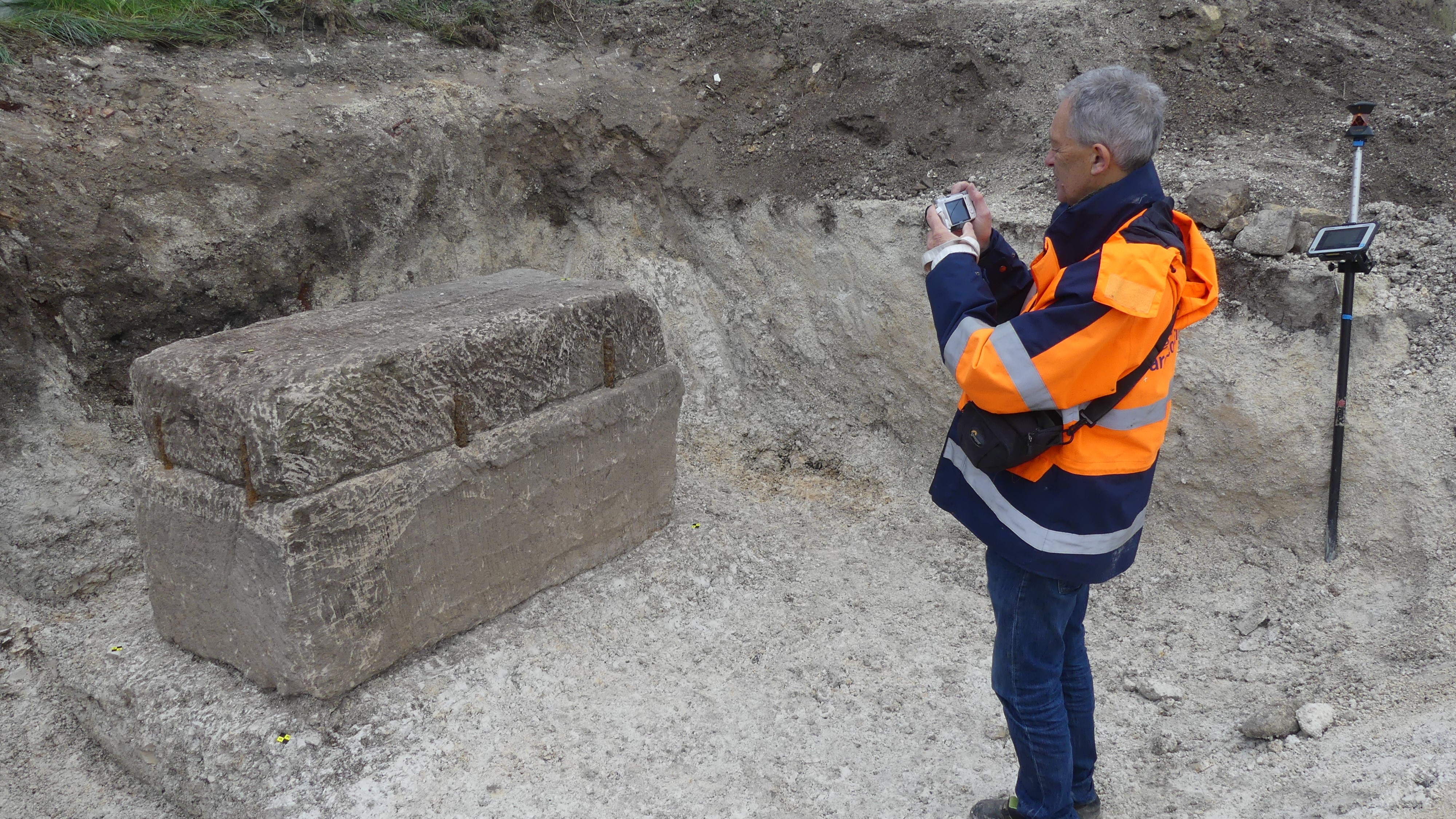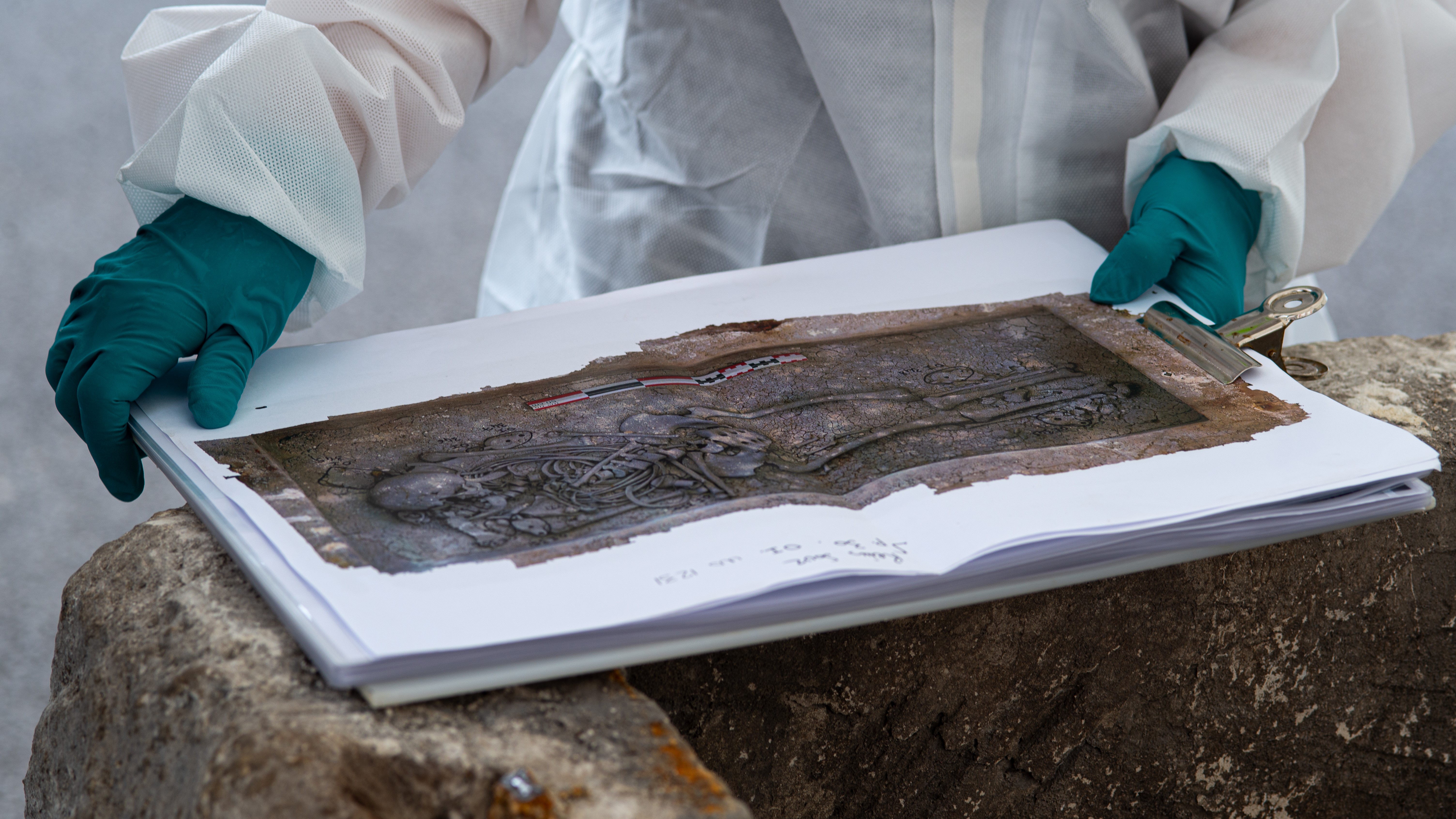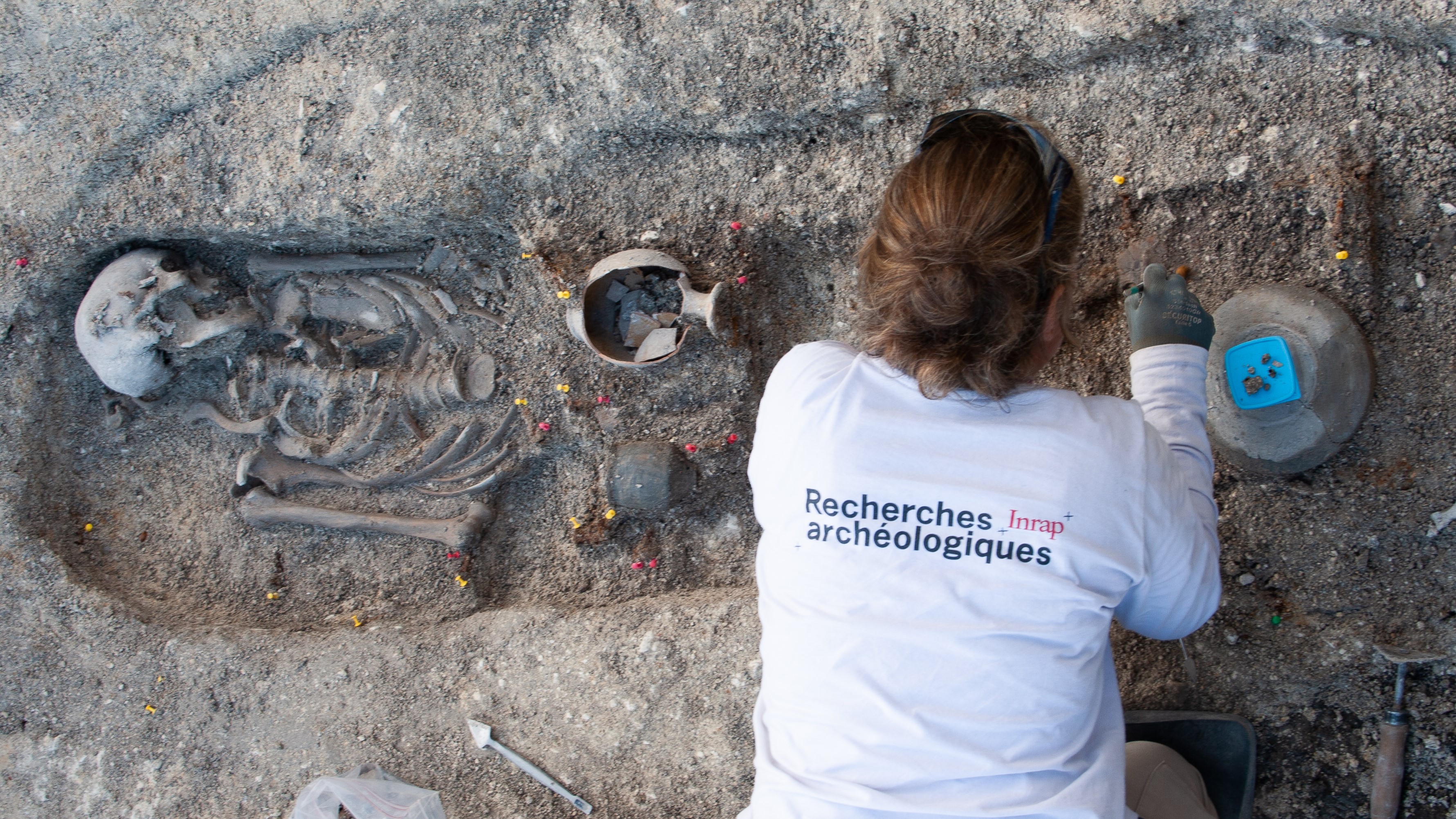'Exceptional' 1,800-year-old sarcophagus unearthed in France held woman of 'special status'
Archaeologists excavating an ancient necropolis have unearthed a Roman-era sarcophagus containing the remains of a second-century woman, who was buried with oil lamps and accessories.
Archaeologists excavating an ancient necropolis in northeastern France have discovered an unlooted, unopened Roman-era sarcophagus dating to the second century A.D. The tomb likely holds the remains of an elite woman, archaeologists said.
The rough limestone sarcophagus was sealed shut with eight iron clasps, and its contents were hidden beneath a thick stone lid weighing 1,700 pounds (770 kilograms), according to a translated statement from the French National Institute of Preventive Archaeological Research (INRAP). To glimpse what lay inside, archaeologists X-rayed the sarcophagus and then inserted an endoscopic camera, which revealed a human skeleton and various grave goods.
"It's quite exceptional, it's the first time we've found a tomb that is intact and has not been looted," Agnès Balmelle, assistant scientific and technical director at INRAP, told the French newspaper Le Parisien.
Related: Elite Roman man buried with sword may have been 'restrained' in death
The woman's skeleton was surrounded by beauty accessories — including a small mirror, an amber ring and a comb — intended to accompany the body into the afterlife. Such a monumental tomb suggests the woman, who was around 40 years old when she died, held a "special status," Balmelle said.
"The skeleton occupied the entire space inside the 1.53-meter [5-foot] tank," Balmelle added, leaving just enough room for the accessories, as well as four oil lamps and two glass vials that may have held scented oils.
Archaeologists discovered the sarcophagus while excavating an ancient necropolis sprawling over 13,000 square feet (1,200 square meters) in the northeastern French city of Reims. During the second century, Reims, then known as Durocortorum, was one of the largest cities in the Roman Empire and the capital of Belgic Gaul — a province in northeastern Roman Gaul that included parts of modern-day France, Belgium, Luxembourg, the Netherlands and Germany.
Get the world’s most fascinating discoveries delivered straight to your inbox.
The newly unearthed necropolis is one of several that extended beyond the city's fortifications and along seven main thoroughfares leading to other Roman Gallic metropolises, including Lutetia (now Paris) and Lugdunum (modern-day Lyon). Since the first of these cemeteries came to light in the second half of the 19th century, archaeologists have excavated 5,000 ancient burials in Reims, according to the statement.
Most of these burials were looted over the centuries, however, and the grave goods that survived were largely destroyed during World War I, when the museum they were housed in was bombed.
The sealed sarcophagus is the first unlooted tomb of its kind discovered in a former Gallo-Roman town, according to the statement. In the area surrounding it, archaeologists found another 20 buried and cremated human remains laid to rest over several centuries.
These remains will be added to a growing bank of samples salvaged from Reims' necropolises. Scientists hope that by comparing DNA from the skeleton in the sarcophagus to some of these samples, they may be able to determine whether the woman belonged to a local or foreign elite.

Sascha is a U.K.-based staff writer at Live Science. She holds a bachelor’s degree in biology from the University of Southampton in England and a master’s degree in science communication from Imperial College London. Her work has appeared in The Guardian and the health website Zoe. Besides writing, she enjoys playing tennis, bread-making and browsing second-hand shops for hidden gems.





